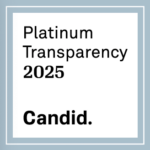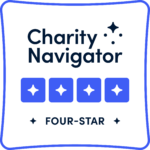One year ago, Jan. 19, 2017, FDA officially launched the Oncology Center of Excellence to leverage the combined skills of regulatory scientists and reviewers with expertise in drugs, biologics and devices (including diagnostics).
Dr. Richard PazdurIn doing so, we hoped to help expedite the development of oncology and hematology medical products and support an integrated approach to the clinical evaluation medical products for the treatment of cancer.
Significantly, OCE is the first center to focus on a specific disease rather than FDA’s traditional orientation toward centers that focus on specific products. In this new era of cancer therapeutics development, biologic products like gene and cellular therapies and vaccines, and devices like next-generation sequencing in vitro diagnostics, are increasingly being integrated with drug therapies into patient care.
Looking back over the past year, it is clear that FDA — and patients — have benefited from this unique disease-specific center. To get started we established procedures for collaboration across the centers. We created disease-specific interest groups so that experts across the various FDA review divisions can talk about cutting-edge science. We also created an internal scientific council to advise the OCE. By breaking down traditional silos and focusing on a specific disease, we increased our communication and collaboration, creating best practices to integrate our reviews of these exciting new technologies.
Altogether in 2017, we approved 16 new drug and biologic applications, including the first two cell-based gene therapies. We also approved 30 supplemental drug and biologic applications, two biosimilar applications in oncology, and cleared or approved several in vitro diagnostics.
And we used creative approaches for approval. For example, last May, FDA granted the first approval of a cancer treatment based on a tumor’s biomarker without regard to the tumor’s original location. Pembrolizumab is indicated for the treatment of adult and pediatric patients with unresectable or metastatic solid tumors that have been identified as having a biomarker known as microsatellite instability-high (MSI-H) or mismatch repair deficient (dMMR), abnormalities that affect the proper repair of DNA inside the cell. Rather than requiring separate development programs for each disease site, we created a single therapeutic approach for patients with different tumor types, allowing extrapolation of the observed treatment effect to diverse tumors.
Notable Oncology Products Approved in 2017
Drugs and Biologics
- The first two cell-based gene therapies – chimeric antigen receptor (CAR) T-cell immunotherapies for the treatment of advanced hematologic malignancies – tisagenlecleucel for pediatric precursor B-cell acute lymphoblastic leukemia and axicabtagene ciloleucel for the treatment of adult patients with relapsed or refractory large B-cell lymphoma after two or more lines of systemic therapy. To treat a serious adverse event known as cytokine release syndrome associated with tisagenlecleucel, tocilizumab was concurrently approved with that drug.
- The first cancer drug product label update describing how certain patients could STOP taking nilotinib once their cancer, Philadelphia chromosome positive chronic myeloid leukemia, had responded after at least three years of taking the drug.
IVDs
- The Oncomine DX Target Test that detects mutations in 23 genes, including BRAF, ROS1 and EGFR mutations in non-small cell lung cancer
- Memorial Sloan Kettering Cancer Center’s IMPACT next-generation sequencing (NGS) tumor profiling test that detects mutations in 468 unique genes that can identify a higher number of genetic mutations (biomarkers) that may be found in various cancers than any test previously reviewed by the agency
- FoundationOne CDX, an NGS test that detects genetic mutations in 324 genes, two genomic signatures and tumor mutational burden in solid tumors for use as a companion diagnostic to identify patients with specific mutations who may benefit from certain FDA-approved treatments for non-small cell lung cancer, melanoma, breast cancer, colorectal cancer or ovarian cancer—extending beyond the previous “one test for one drug” model
Outreach and Collaboration
In addition to product review, the Oncology Center of Excellence is also tasked with external outreach and the academic development of our staff. To be effective, we must collaborate with our stakeholders to develop discussions and conferences that will have an impact on drug regulation. In the past year, we held more than 30 symposiums bringing academics and key therapeutic leaders to FDA. We also held a workshop for patient advocates to discuss the important role they can play in oncology product development. Often these conferences were conducted jointly with oncology professional societies, patient groups, and leading cancer centers.
Now that we have been in business for a year, it is time to ask our stakeholders about the new center. We have scheduled a public listening session on March 15 to hear recommendations from stakeholders regarding their expectations of the OCE, specifically, what stakeholders desire of the OCE in terms of structure, function, regulatory purview, and activity.
We are planning other public meetings as well, including a public workshop on Jan. 29 to seek input from experts and patients to discuss how to best implement genetic sequencing data in patient management, and later this year workshops on trial designs for early stage lung cancer and how best to combine immunotherapy and radiation therapy.
The OCE also must be a leader in the development of regulatory science in oncology. Some of our recent initiatives include:
- Re-evaluating clinical trial eligibility criteria to ensure patients who enter clinical trials will reflect patients treated in the community. Our work with the American Society of Clinical Oncology and Friends of Cancer Research was detailed in the Journal of Clinical Oncology.
- Encouraging the development of site-agnostic indications. Our perspective on this topic was published in the New England Journal of Medicine.
- Advocating for the use of master protocols, umbrella protocols, and the use of common controls. We have worked with sponsors to use seamless design trials that eliminate the conventional division of phase 1, 2, and 3 trials that may delay drug development. Working with professional groups and sponsors, we have promoted the use of these innovative designs to reduce redundancy and inefficiency of clinical trials.
- Devoting resources to the use of real-world evidence for potential regulatory decision-making. This emerging area will in the future provide important safety and efficacy information and a window on how drugs are actually used.
- Working with colleagues across FDA, at the National Cancer Institute, and the HHS Office of Human Research Protections, as well as many other external stakeholders to foster research into patient-reported outcomes measurement and generating science-based recommendations for regulatory policy.
Looking to 2018 and beyond, I am optimistic about the outlook for the future of oncology drug development. Maintaining the OCE’s emphasis on excellence in regulatory science will ensure the rapid development of highly effective and less toxic therapies for patients with cancer. At the end of the day, patients with a life-threatening disease want to live longer, with a better quality of life. We can never lose sight of our dedication toward progress against this disease.
https://blogs.fda.gov/fdavoice/index.php/2018/01/the-one-year-anniversa…

